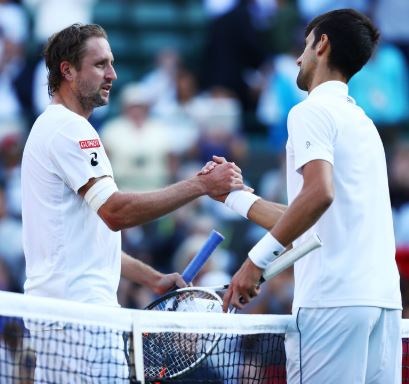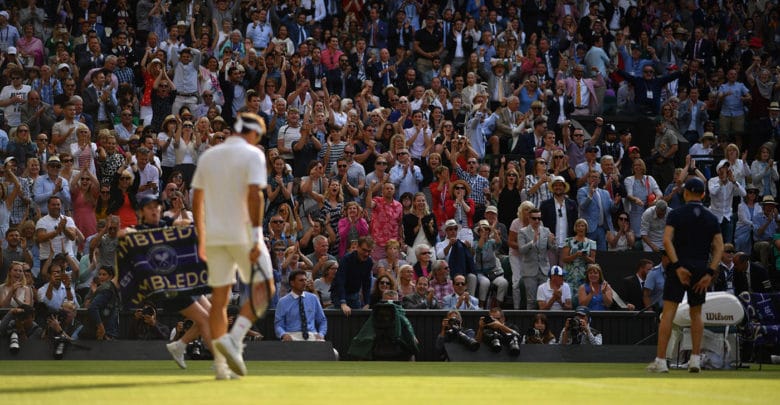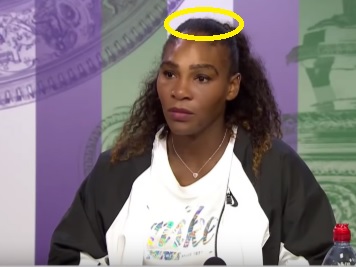Update: At the start of the Adria Tour last week, I wrote the post below about Novak Djokovic expressing anti-vaccine sentiments and hosting a multi-city tennis event without a semblance of public health safety or precaution. Doubling down on hubris, Novak then:
-Declared water can be purified with positive emotions.
-Posted Instagrams of himself and other players playing soccer, basketball, dancing in a club, all in perpetual physical contact- without masks or social distancing.
-Encouraged 5,000 fans to pack a small tennis stadium to watch Adria Tour matches without any health safety protocols.
-Held a kids day event with large crowds and no social distancing.
-Left Croatia and crossed borders without a COVID test, fully aware that players and coaches he brought together had just tested positive.
-Tested positive for COVID (along with his wife) back in Serbia.
The Adria Tour was a super spreader event for Europe. In addition to the tennis players, coaches, staff and an untold number of fans who now have COVID, NBA star Nikola Jokic, who played a little basketball with Djokovic’s posse, also tested positive for COVID. Viktor Troiki and his pregnant wife tested positive. WTA insider, Courtney Nguyen, may have summarized the “irresponsible,” “weird” Adria Tour best: “This isn’t a seat belt issue. This is a drunk driving issue… Family, friends, innocent strangers, kids, hotel workers, food service, transportation workers. I don’t care if YOU get sick. I care if the people around you get sick and the people around them and the people around them.”
There is a movement afoot among ATP players to have Djokovic removed from the ATP Players Council of which he is the current president. When Nick Kyrgios has taken the moral high ground over your behavior, there’s a strong argument you do not belong in a position of leadership.
Here’s my post from last week:
One of the greatest disappointments of tennis’ COVID-induced hiatus is the revelation last month that World #1, Novak Djokovic, is an anti-vaxxer. “Personally, I am opposed to vaccination, and I wouldn’t want to be forced by someone to take a vaccine in order to be able to travel.” Could there be a more cringe-worthy statement during a public health crisis?
This shocked many across the world as Djokovic has shown himself to be a generally enlightened kind of person. He is a leader on the ATP Players Council and joined with fellow superstars Rafael Nadal and Roger Federer to implement a plan assisting lower-ranked ATP competitors who are struggling financially during suspension of the tour. Through tiered donations from the world’s highest paid players, Djokovic demonstrated the kind of leadership, compassion and foresight needed in this moment. Still, Djokovic is among the ever-growing, ignorant minority on the subject of vaccination.
Djokovic never attended college. In an interview for NDTV in 2012, he lamented his lack of formal education: “I never went to university. Well, if I can say, that’s one wish I have in life, one regret, that I would like to go in some university, because I really like the idea of educating yourself and being part of a group of students.” As a Tour leader, he may want to pursue a bachelor’s degree in Public Health before undermining global health officials on a matter of such extreme seriousness… or organizing a stadium full of fans amidst a global pandemic.
Many pro tennis players lack a college education. Not that attending college enlightens all minds. In the case of former University of Tennessee standout, Tennys Sandgren, that includes homophobic and anti-abortion comments, supportive online exchanges with white supremacists and his endorsement of “pizzagate”, the b@tsh:t crazy conspiracy theory claiming that Hillary Clinton was linked to a child sex-trafficking ring.
John Isner, who graduated from the University of Georgia as the #1 player in the NCAA, found himself being savaged on Twitter last week over a series of tweets and replies that seemed more concerned about law and order than black lives. Isner, who has expressed admiration for President Trump in the past, repeated the President’s view that violent protesters were members of Antifa and should be branded terrorists. He had also “liked” several tweets from accounts that mocked protesters while focusing on opportunists looting stores during the civil unrest. If Isner had ever had an African American teammate at Georgia, perhaps he would have a different take on current events.
Tennis has a long history of bigotry and biased thinking. The most glaring stain on the sport currently resides Down Under. Women’s tennis legend Margaret Court is an unabashed, vocal homophobe. Her steady antagonism of lesbian players on tour and her history of supporting apartheid in South Africa have led people across the sport to call for renaming Margaret Court Arena in Melbourne Park. Even so, it boggles the mind that there is not a single member of the ATP Tour who is openly gay. Recognizing the statistical impossibility, what is it about the ATP that has prevented gay male athletes from feeling safe in 2020?
There is hope for the future. Coco Gauff, who isn’t old enough to attend college, who had wins over Venus Williams and Naomi Osaka before she turned 16, has shown an enlightened outlook. Gauff has put the stars of the men’s tour to shame, showing precisely how a platform can be utilized for good. When the top men’s player is amplifying vaccine conspiracy theories and flouting social distancing guidelines, it’s nice to know there is a better future for the sport. In Gauff’s case, it is widely agreed, the quality of parenting makes a real difference in the kind of person one grows up to be. To quote Steven Sondheim, “Children may not obey, but, children will listen.”

– Jeffrey Menaker


 Previously, the US Open was the only grand slam tennis tournament where ball people threw the ball. Video of the first US Open, 50 years ago, on grass, shows the ball people (looking pretty chill) throwing perfect strikes on one hop and then waiting for the players (Ashe and Okker), not the other way around. Quick hands, a strong and accurate arm, alert eyes, and the ability to not attract attention have always been the hallmarks of a great US Open ballperson. Like today, the ball people who swept the net of errant serves in 1968 were fleet and agile. As the 2018 main draw kicks off on Monday, the USTA has unwittingly introduced an agent of inefficiency to the flow of matches. Why?
Previously, the US Open was the only grand slam tennis tournament where ball people threw the ball. Video of the first US Open, 50 years ago, on grass, shows the ball people (looking pretty chill) throwing perfect strikes on one hop and then waiting for the players (Ashe and Okker), not the other way around. Quick hands, a strong and accurate arm, alert eyes, and the ability to not attract attention have always been the hallmarks of a great US Open ballperson. Like today, the ball people who swept the net of errant serves in 1968 were fleet and agile. As the 2018 main draw kicks off on Monday, the USTA has unwittingly introduced an agent of inefficiency to the flow of matches. Why?